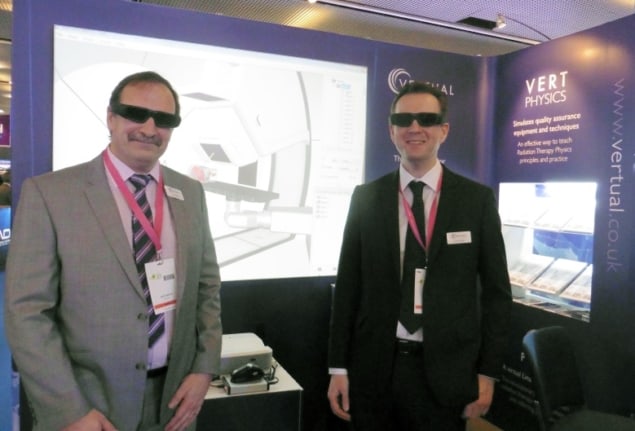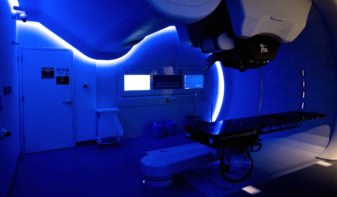
When pilots learn to fly a plane, they train on a flight simulator that artificially re-creates the aircraft environment – enabling them to hone their skills and practise expected and, importantly, unexpected flight scenarios with zero risk. So why not employ the same approach for radiotherapy? That’s the underlying premise of VERT (virtual environment for radiation therapy training) – a training simulator developed by UK company Vertual.
“Around 2000, I was teaching radiotherapy at Sheffield Hallam University,” explained Andy Beavis, Vertual’s CSO and radiotherapy director. “It would have been a lot easier to teach them in a linac bunker, but you can’t do that because it is being used to treat patients. So I had the idea of bringing the linac into the classroom instead.”
To do this, Beavis and colleagues established Vertual, a spin-off company from Hull University and Hull and East Yorkshire Hospital NHS Trust, to create tools for radiotherapy training and education. He notes that the development came about due to a collaboration between scientists from different fields, with his background in radiotherapy physics complementing that of the other founders, who were computer scientists. “It is truly one of those examples where the parts are greater than the whole,” he said.
Vertual’s product – VERT – creates a detailed simulation of a treatment room and linac, and uploads a patient model, using DICOM to transfer real patient data if required. The interactive 3D display shows the planned beam delivery, runs a virtual treatment and can even show the dose deposition inside the patient.
“VERT performs 3D linac simulations, using authentic hand controls from an actual linac, to give students hands-on experience of a treatment machine,” explained James Ward, managing director and a co-founder of the company. “It uses the same rationale as flight simulators, providing a completely safe environment for training. No-one is going to harm the patient. It’s the only simulator of this type in the world.”
When the company launched in 2007, VERT was rolled out to all radiotherapy training schools in England. “In the UK, we changed the way therapy radiography was taught,” said Beavis. “It was a great way to begin, as it also gave us a large bank of users who fed back to us and helped improve the software.”
Today, there are 138 VERT systems installed at 130 sites in 26 countries. While the main users are therapy radiographers, the system is also used to train medical physicists, dosimetrists and oncologists. It has also been used as a tool to explain the concept of radiation treatment to patients and their families.
Next step: protons
At the ESTRO 37 congress in Barcelona, Vertual was showcasing its newly launched Proton VERT, a simulator for proton therapy training. “Adoption of proton therapy has really accelerated, there are systems in operation in the UK now,” explained Ward. “This is a natural extension of our product and we anticipate it being useful for our customers in many countries.”
The initial release incorporates an interactive simulation of the Varian ProBeam proton gantry. It also includes a functional model of the ProBeam robotic treatment couch and integrates the ProBeam hand controls. The company notes that future developments will include modelling of other vendor’s proton systems.
As with its linac counterpart, Proton VERT can be used throughout all stages of the proton therapy process, providing 3D visualizations of treatment plans displayed on the machine, as well as simulated beam delivery. “Proton VERT provides tools to help people thoroughly understand the nuances of proton therapy, and to ensure that treatment is implemented in the right way,” said Beavis.
Beavis noted that one major advantage of both the linac and the proton version is that trainees can simulate what would happen if a treatment goes wrong. “They can see the effects of dose delivered to the wrong place, with no harm done,” he explained. “You’d struggle to find a pilot who hasn’t trained on a flight simulator first. We want to see the same here.”



